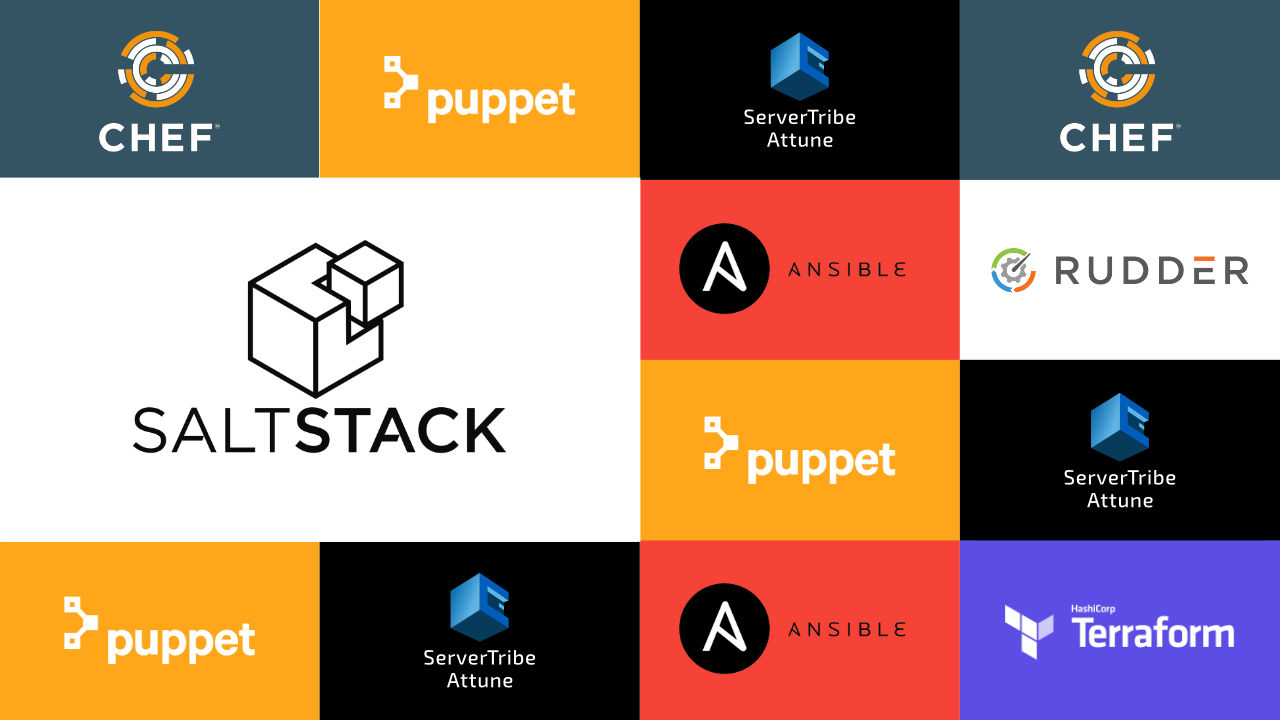
Top 6 SaltStack Alternatives in 2024: Popular Server Automation Tools
Are you looking for SaltStack alternatives? When evaluating server automation alternatives to SaltStack, you will want to compare competencies and features such as configuration management, server automation, cost, analytics, community support, integration and deployment, compliance testing, and issues tracking, among others.
Configuration management and server automation are essential components of an organization running at maximum operational efficiency. Developing software is hard enough; satisfying user demand for new features can be even more challenging. That makes automation an essential part of any IT infrastructure. As McKinsey puts it, automation at scale can have numerous benefits such as “greater workforce efficiency, increased revenue, and higher consumer satisfaction.”
SaltStack alternatives for server automation include Attune, Ansible, Terraform, Chef, Puppet, and Rudder. This article will provide details on the features and benefits of these alternatives. But before then, let’s find out more about SaltStack and its features.

What is SaltStack: Top SaltStack Alternatives
SalStack or Salt is a configuration management and server automation solution that you can deploy in the cloud, on-premise, or in a hybrid environment. You can get it up and running in minutes. It is easily deployable, scalable, and fast enough to handle thousands of servers. On top of that, you can remotely execute commands.
SaltSack also provides an automated system for monitoring and managing complex environments. With a dynamic environment that offers both agentless and agent-based configuration management, Salt can simultaneously push code to several nodes for configuration.
Another great feature of SaltStack is its SecOps capabilities. You can use it to identify and resolve issues and vulnerabilities in your infrastructure, keeping you compliant and secure.
Despite these features, you may find that you want other server automation options and features you cannot get from Salt.
Attune
Although relatively new, Attune offers a range of advanced and innovative features that are truly amazing. It’s a server automation solution for managing, provisioning, and patching virtual and physical servers. Attune provides an easy-to-use platform for automating and orchestrating server processes.
You no longer have to worry about enabling digital enablement projects, Attune allows organizations to accelerate builds and releases while enhancing security. In addition, it’s a cross-platform solution that is written in Python and available on Mac OS, Windows, and Linux. Not satisfied with that, Attune supports many scripting languages, and you can execute scripts on Bash, CMD, or PowerShell. On top of all that, Attune’s Node automation features allow the setup of Docker on Raspberry Pi and the configuration of Home Labs to run with ease.
Features and benefits of Attune
- Easy-to-use interface for full-stack orchestration and automation for the entire server stack
- Agentless architecture & multi-server coordination
- It provides powerful file-generation capabilities as well
- Shareable and portable processes
- Attune allows you to quickly create automated jobs without learning a new coding language or reinventing the wheel by copying and pasting existing scripts
Ansible
Ansible is a server automation and configuration management solution that is similar to SaltStack Enterprise. The core feature of Ansible is to automate the entire software development process. It does this by provisioning servers, patching, security & compliance, and automating build and deployment procedures.
As an agentless architecture, Ansible can manage and connect dynamic environments with nodes called Ansible Modules. Ansible stands out from other saltstack alternatives with its lightweight nature, intuitive interface, and rapid deployment.
Read more: Top 5 Alternatives to Ansible
Features and benefits of Ansible
- Ansible connects and supports several CI/CD tools such as Jenkins
- Rapid deployment of applications
- Simplified release procedures by reducing workload complexity
- Exceptionally efficient and frees up development time
- Streamlines your software releases and reduces complexity
- Provides easy setup and usage for Ansible playbooks
- Provides an agentless architecture meaning you don’t have to install any extra software on client systems
Puppet
Puppet is another option to check out as one of the popular saltstack alternatives. Puppet makes it easy to deploy, configure, and manage servers. Puppet is also a configuration management solution that enables continuous deployment, build, patching, task scheduling, security, and compliance. Puppet uses a Master-Slave configuration that communicates through a secure encrypted channel enabled by SSL.
The beauty of Puppet is that you can move your infrastructure easily and rapidly through integration and deployment pipelines. Adding to that, you get consistency in your infrastructure and multiple data centres with greater flexibility.
Features and benefits of Puppet
- Offers multi-platform support for Linux, Windows, Mac OS, Solaris, and more
- Built with C++ and Ruby
- Provides continuous monitoring and configuration management for all hosts
- Enhances scalability and reduces manual errors
- Centralized configuration management
- Extensive community usage with over 30,000 organizations using it including Red Hat, Siemens, and Google
- Provides comprehensive documentation and references
Chef
Chef is a well-known product for managing configuration and servers. Put simply, it simplifies complex automation processes and provides consistent and well-structured configuration across multiple servers. Through continuous monitoring, it can also ensure adherence to compliance and standards.
One key feature in Chef is its integration capabilities. It enables automatic provisioning and configuration of new machines such as GCP, AWS, and Azure.
Features and benefits of Chef
- Written in Erlang and Ruby
- Enables rapid and consistent scaling
- Provides data center and cloud management services
- Ensures a high level of server uptime
- Configuration modes include server/client and standalone
- Offers multi-platform support, including Windows, Linux, Mac OS, Solaris, FreeBSD, RedHat/CentOS, and Fedora
- Large and active community support
RUDDER
Next on this list is Rudder. It is an open-source configuration management tool that is based on the CFEngine. One of its best features is its advanced asset management function. It makes configuration management easier by identifying nodes and their features. It can run either via a user interface or scripts.
Rudder provides user-friendly continuous automation and compliance tools through a web-based, role-based approach.
Features and benefits of Rudder
- Relies on local agents installation for every managed system
- Written in C language and capacity of up to 10,000 nodes
- Provides a web interface that uses Scala
- Keeps infrastructure and data center compliant over time by checking every rule
- Made for production use
Terraform
Terraform is also one of the most popular SaltStack alternatives for server automation and configuration management. Terraform is one of the most popular IT automation tools on the market. It provides an easy-to-use interface and support for many different cloud environments. With an open-source IaC, you can manage a variety of cloud services via a CLI.
Terraform comes with the HashiCorp Configuration Language (HCL) built-in, making it easy to write declarative commands that server administrators can execute.
Features and benefits of Terraform
- Offers multi-platform support ensuring compatibility with Windows, Solaris, FreeBSD, Mac OS, and more.
- Out-of-the-box HCL support for describing resources using blocks, arguments, and expressions.
- Reduces human error and automates resource provisioning.
- Utilizes a unified workflow to manage several public clouds and services.
Read more: Top 10 Terraform Alternatives
Choosing The Best SaltStack Alternatives: Server Automation Tool
The truth is that selecting the right server automation tool or SaltStack alternatives is never simple. Even with this list, you have to consider several factors, most importantly your organization’s requirements. What is your preference, agentless or agent-based? Is it more convenient to have configuration management, continuous monitoring, and server automation all rolled into one or something more specific? These are questions for you to consider when choosing the best server solution for you.

Comments